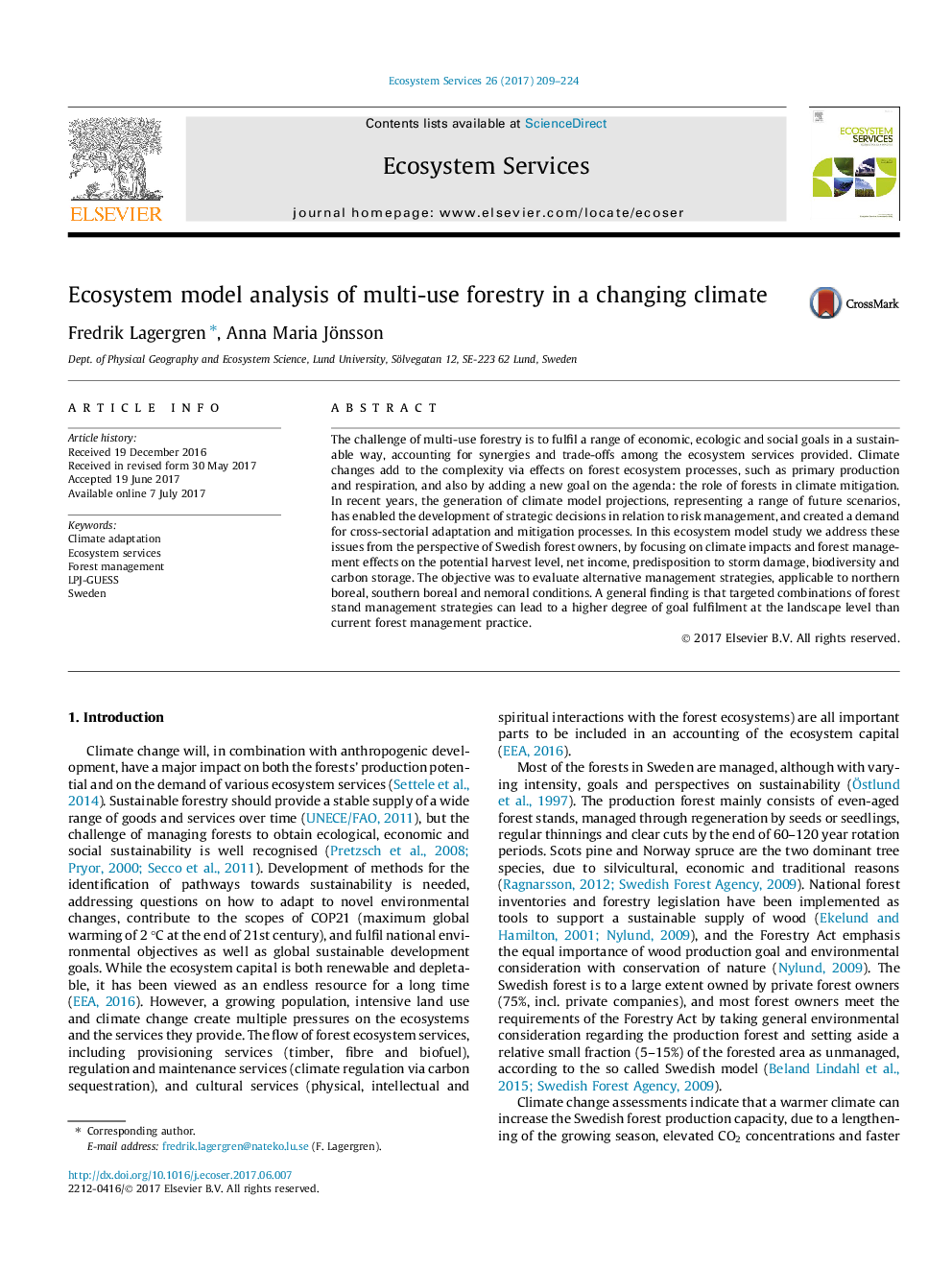| کد مقاله | کد نشریه | سال انتشار | مقاله انگلیسی | نسخه تمام متن |
|---|---|---|---|---|
| 6463438 | 1362116 | 2017 | 16 صفحه PDF | دانلود رایگان |
- Ecosystem model simulations of forest under climate change and different management.
- Simulated levels of ecosystem services analysed for three regions in Sweden.
- Optimal management selection depends on ecosystem-service valuation by forest owner.
- Performance of broad-leafed trees will increase with climate change.
- Shorter rotation period and more broad-leafed trees will increase storm resistance.
The challenge of multi-use forestry is to fulfil a range of economic, ecologic and social goals in a sustainable way, accounting for synergies and trade-offs among the ecosystem services provided. Climate changes add to the complexity via effects on forest ecosystem processes, such as primary production and respiration, and also by adding a new goal on the agenda: the role of forests in climate mitigation. In recent years, the generation of climate model projections, representing a range of future scenarios, has enabled the development of strategic decisions in relation to risk management, and created a demand for cross-sectorial adaptation and mitigation processes. In this ecosystem model study we address these issues from the perspective of Swedish forest owners, by focusing on climate impacts and forest management effects on the potential harvest level, net income, predisposition to storm damage, biodiversity and carbon storage. The objective was to evaluate alternative management strategies, applicable to northern boreal, southern boreal and nemoral conditions. A general finding is that targeted combinations of forest stand management strategies can lead to a higher degree of goal fulfilment at the landscape level than current forest management practice.
Journal: Ecosystem Services - Volume 26, Part A, August 2017, Pages 209-224
